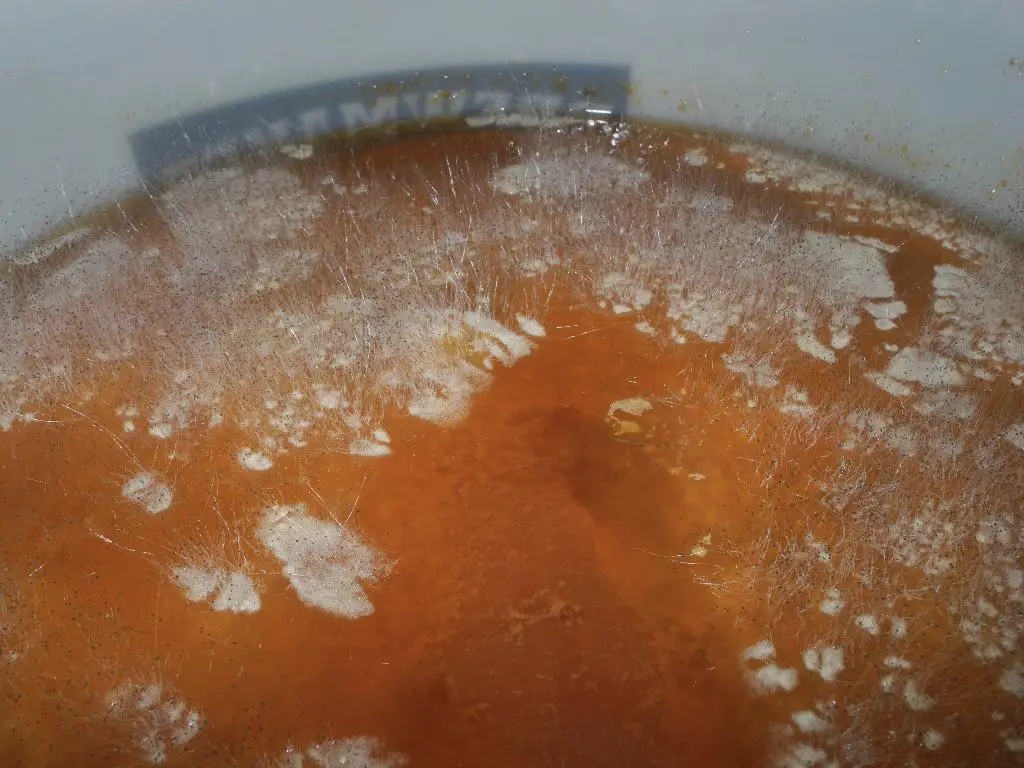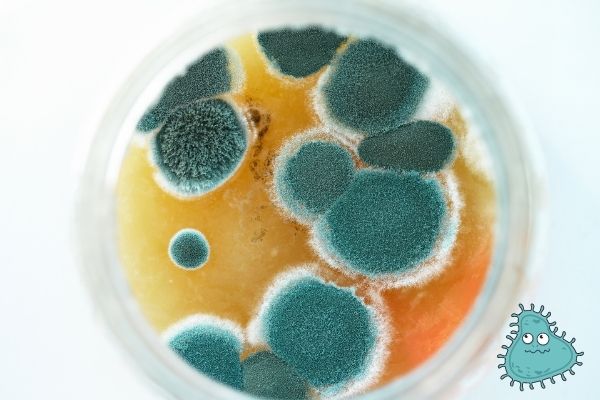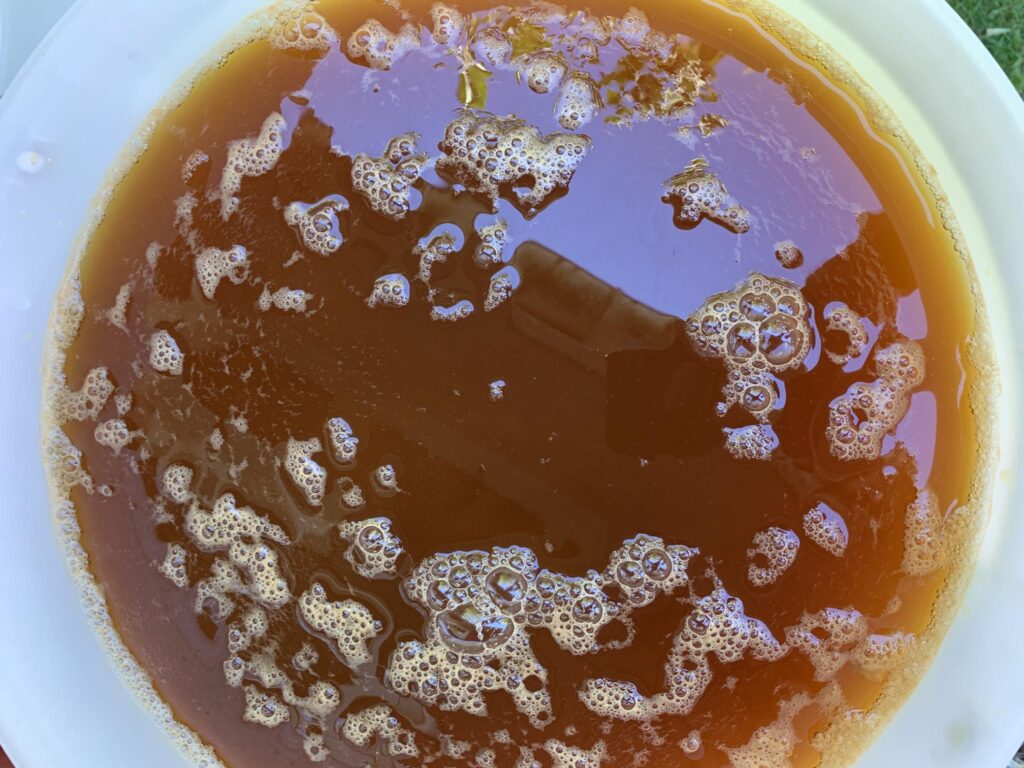Brewing hard cider is fairly easy, but as soon as you stray the slightest away from commercial yeasts and pasteurized apple juice, there is a risk of getting some unexpected flavors (good and bad!).
Today we will talk about the bad ones. The “off-flavors” in cider brewing.
Off-flavors are unwanted and undesirable characteristics that can occur during the cider-making process. These flavors can range from subtle to overpowering, affecting the overall quality of the cider.
Common off-flavors in hard cider include:
- Vinegar-like: This off-flavor manifests as a strong, acidic taste resembling vinegar. It is usually caused by the presence of acetic acid-producing bacteria.
- Sulfuric: A distinct smell of rotten eggs or burnt matches indicates the presence of sulfur compounds. This off-flavor can result from fermentation issues, yeast strains, or improper sanitation.
- Medicinal: A medicinal or band-aid-like flavor can arise from contamination with certain bacteria, such as Lactobacillus or Brettanomyces.
I will go through these, explain what causes them and how to deal with them in this article.
The Importance of detecting and correcting off-flavors early
Detecting off-flavors in hard cider is crucial for maintaining product quality and customer satisfaction. By identifying these off-flavors early on, cidermakers can take corrective measures to prevent their occurrence or rectify the issue before the cider reaches consumers.

Some steps to troubleshoot off-flavors include adjusting fermentation conditions, improving sanitation practices, using different yeast strains, or adjusting ingredient ratios. Regular tasting and analysis during the cider-making process can help ensure that any off-flavor issues are identified and resolved promptly.
By striving for consistent quality and working to eliminate off-flavors, cidermakers can create a superior product that delights consumers and helps build a strong reputation in the industry.
1. Mold and Film Yeasts
Mold and film yeasts are common off-flavors that can occur in hard cider production. These off-flavors can significantly impact the taste and quality of your cider. It’s important to identify and address them promptly to ensure a pleasant drinking experience.

Mold can develop on the surface of cider during fermentation or aging. It often appears as fuzzy patches of blue or green growth.
These molds produce musty or earthy aromas and flavors that can be quite unpleasant. Film yeasts, on the other hand, create a slimy film or crust on the surface of the cider. They can contribute sour or off-putting flavors.
To troubleshoot mold and film yeast off-flavors, prevention is key. Start by maintaining a clean and sanitized cider production environment. Proper cleaning and sanitization of all equipment, containers, and surfaces will help prevent the growth of these unwanted microorganisms.

Additionally, ensure that you are using good quality apples and juice for your cider production. Fresh, healthy fruit will have lower levels of mold and yeast contamination. Proper storage and handling of apples before fermentation is crucial to minimize the risk of off-flavors.
If you do encounter mold or film yeasts during cider production, it is best to discard the affected batch to preserve the overall quality of your cider. Taking immediate action to prevent the spread of these off-flavors to other batches is essential.
By being vigilant and proactive in preventing and addressing mold and film yeast off-flavors, you can produce high-quality hard cider that is free from these unwanted taste disruptions.
2. Wild Yeast Contaminations
Wild yeast contaminations can be a common issue in the production of hard cider. These unwanted yeast strains can result in off-flavors and unpleasant aromas.
To identify and troubleshoot wild yeast contaminations, consider the following steps:
Firstly, be aware of the signs of wild yeast contamination. These may include a buttery or vinegar-like taste and smell, excessive carbonation, or a loss of sweetness in the cider.
Next, take preventive measures to minimize the risk of wild yeast contaminations. Start by thoroughly cleaning and sanitizing all equipment used in the cidermaking process. Properly storing your cider at a cool temperature can also help prevent the growth of wild yeast.
If you suspect a wild yeast contamination, you can try various troubleshooting techniques. One method is to pasteurize the cider by heating it to 145°F for 30 minutes, which can kill off the unwanted yeast strains. Another option is to use sulfur dioxide, a common winemaking additive, to inhibit the growth of wild yeast.
Additionally, consider using commercial yeast strains that are less susceptible to contamination. These specially selected strains can ensure a consistent and desirable flavor profile in your hard cider.
By being vigilant in monitoring for wild yeast contaminations and taking appropriate actions, you can maintain the quality and taste of your hard cider.
3. Bacterial Contaminants
When it comes to hard cider production, bacterial contaminants can cause off-flavors and spoil the final product.

To ensure that your cider maintains its quality, it is crucial to understand and address these issues promptly.
The most common bacterial contaminants in cider production include:
- Acetic Acid Bacteria: These bacteria consume alcohol and convert it into acetic acid, resulting in a sour or vinegar-like taste in the cider.
- Lactic Acid Bacteria: These bacteria produce lactic acid, which can give the cider a tangy or yogurt-like flavor.
- Brettanomyces: While not a bacterium but a yeast, Brettanomyces contamination can lead to unpleasant off-flavors, such as barnyard or band-aid-like aromas.
To troubleshoot bacterial contamination in your cider, it is important to maintain proper hygiene throughout the production process, including sanitizing equipment and containers. Additionally, regular monitoring of fermentation conditions, such as pH and temperature, can help detect any abnormalities early on.
If bacterial contamination is suspected, it is essential to assess the extent of the issue and take necessary corrective measures. This may include filtering, pasteurization, or adding sulfites to inhibit bacterial growth.
By being vigilant about bacterial contaminants and promptly addressing any issues, you can ensure that your hard cider maintains its desired flavors and delights your taste buds.
4. Off-Flavour Chemical Compounds Produced
During the production of hard cider, several off-flavor chemical compounds can be produced, resulting in undesirable taste and aroma. It is important to identify these compounds to troubleshoot and rectify any issues in the cider-making process.
One common off-flavor compound is acetaldehyde. This compound often gives off a green apple-like aroma and taste. Acetaldehyde can be formed due to incomplete fermentation, improper yeast health, or inadequate oxygen exposure during fermentation.
Another off-flavor compound is ethyl acetate, which has a fruity or nail polish-like odor. Ethyl acetate can be formed when there is an excessive amount of acetic acid or a contamination of wild yeast or bacteria.
A compound called hydrogen sulfide can also be produced, resulting in a rotten egg-like smell. This can occur due to the presence of sulfur-containing compounds or the use of sulfur dioxide during the cider production process.
Furthermore, diacetyl is a compound that imparts a buttery or butterscotch flavor to the cider. Diacetyl can be produced when there is a lack of healthy yeast, improper fermentation temperature control, or bacterial contamination.
To mitigate off-flavors, it is important to monitor and control fermentation conditions, ensure proper yeast health, maintain appropriate temperature control, and practice good sanitation methods throughout the cider-making process. Regular sensory analysis and laboratory testing can aid in detecting off-flavor compounds and troubleshooting their sources.
Common Hard Cider Off-Flavors and Their Causes
Acetaldehyde: Causes and characteristics
Acetaldehyde is a common off-flavor in hard cider that is caused by incomplete fermentation or oxygen exposure. It is often described as a green apple or freshly cut grass aroma.
To prevent acetaldehyde, it is crucial to ensure proper fermentation, including adequate yeast nutrient levels and temperature control.

Oxygen exposure should also be minimized during the fermentation and storage process.
Diacetyl: Origins and flavor profile
Diacetyl is another off-flavor that can affect hard cider, characterized by a buttery or butterscotch-like taste. It is primarily caused by the presence of specific yeast strains or bacterial infections. To avoid diacetyl, it is important to use yeast strains known for low diacetyl production and maintain proper sanitation practices in the cider-making process.
Sulfur: Sources and implications
Sulfur off-flavors in hard cider can be detected as rotten eggs or burnt rubber aromas. These off-flavors can result from yeast stress, high levels of sulfur-containing compounds in the juice, or inadequate yeast nutrient levels. Proper yeast selection, nutrient supplementation, and monitoring of sulfur dioxide levels during fermentation can help prevent or reduce sulfur off-flavors in hard cider.
By understanding the causes and characteristics of common off-flavors in hard cider, cider makers can troubleshoot and mitigate these issues. Regular sensory evaluation, quality control measures, and adherence to proper fermentation and storage practices are key to ensuring a desirable flavor profile in hard cider.
Here’s a table summarizing the common hard cider off-flavors:
| Off-Flavor | Causes | Characteristics |
|---|---|---|
| Acetaldehyde | – Incomplete fermentation – Oxygen exposure | Green apple or freshly cut grass aroma |
| Diacetyl | – Specific yeast strains – Bacterial infections | Buttery or butterscotch-like taste |
| Sulfur | – Yeast stress- High sulfur-containing compounds- Inadequate yeast nutrient levels | Rotten eggs or burnt rubber aromas |
Troubleshooting Off-Flavors in Hard Cider
1. Identifying the off-flavor: Tools and techniques
Identifying off-flavors in hard cider can be a crucial step in ensuring the quality of your product. Some common off-flavors include acetaldehyde, diacetyl, and sulfur-related compounds. To pinpoint these off-flavors, you can use sensory evaluation techniques such as aroma and taste analysis, or utilize analytical tools like gas chromatography or mass spectrometry.
2. Correcting acetaldehyde off-flavors
Acetaldehyde off-flavors in hard cider are often described as green apple-like or rotten fruit aromas. To correct this off-flavor, it is important to address the underlying issues during fermentation. This may involve adjusting the fermentation temperature, yeast selection, or monitoring the oxygen levels throughout the fermentation process.
3. Mitigating diacetyl off-flavors
Diacetyl off-flavors in hard cider can impart a buttery or butterscotch-like aroma and taste. To mitigate this off-flavor, you can optimize the yeast fermentation conditions, such as controlling the temperature and ensuring proper yeast health. Additionally, thorough cleaning and sanitation practices can help prevent the formation of diacetyl during fermentation.
4. Addressing sulfur-related off-flavors
Sulfur-related off-flavors in hard cider can present as rotten egg or burnt match aromas. These off-flavors are typically caused by yeast metabolism or the presence of sulfur-containing compounds in the cider.

To address this issue, proper yeast nutrient management, appropriate sulfur levels in cider ingredients, and ensuring sufficient aeration during fermentation can help mitigate sulfur-related off-flavors.
By identifying and addressing these off-flavors, you can ensure that your hard cider maintains its desired taste profile and quality, ultimately satisfying your customers’ palates.
Regular monitoring, proper fermentation techniques, and adherence to good manufacturing practices are crucial in troubleshooting and preventing off-flavors in hard cider production.
Preventing Off-Flavors in Hard Cider Production
1. Proper fermentation practices
To prevent off-flavors in hard cider production, it is crucial to follow proper fermentation practices. This includes selecting the right yeast strains, controlling fermentation temperature, and managing the fermentation process effectively. Choosing a yeast strain that is suitable for cider production can help enhance the flavor profile and reduce the risk of off-flavors. Additionally, maintaining the proper temperature during fermentation is essential to minimize the production of unwanted compounds that can lead to off-flavors.
2. Controlling temperature and oxygen exposure
Temperature control is vital to prevent off-flavors in hard cider. Enzymatic processes can be affected by temperature fluctuations, leading to the production of undesirable compounds.
It is important to monitor and maintain the fermentation temperature within the recommended range to ensure optimal flavor development.
Oxygen exposure should also be minimized throughout the entire cider production process, as it can contribute to off-flavors and oxidative reactions.
3. Monitoring yeast health and nutrient management
Yeast health and nutrient management play a significant role in preventing off-flavors in hard cider. Proper yeast nutrition is crucial for yeast metabolism and fermentation performance.
Monitoring yeast health and providing adequate nutrients, such as nitrogen, vitamins, and minerals, can help maintain a healthy fermentation and prevent the production of off-flavors.
It is important to follow recommended nutrient additions and conduct regular yeast health checks to ensure optimal cider quality.
By implementing these practices, cider producers can minimize the risk of off-flavors and create high-quality, flavorful hard ciders that consumers will enjoy.
Conclusion
Understanding and troubleshooting off-flavors in hard cider is crucial for producers who want to create a high-quality product and maintain customer satisfaction. By identifying off-flavors early on and taking necessary steps to prevent or correct them, cider makers can ensure that their product meets the desired taste and aroma profiles.
1. Importance of understanding and troubleshooting off-flavors
Recognizing off-flavors is essential because it allows cider makers to address issues before they impact the overall product quality. Off-flavors can result from various factors such as fermentation temperature, yeast strains, fruit quality, or contamination. By understanding the causes and effects of different off-flavors, producers can take proactive measures to prevent them, thereby maintaining consistency in their cider’s taste and aroma.
2. Summary of prevention and correction methods
To prevent off-flavors, cider makers can focus on factors like maintaining clean and sanitized equipment, controlling fermentation temperature, selecting appropriate yeast strains, and ensuring quality fruit sources. In the event that off-flavors do occur, corrective actions such as blending or using additives can be taken to improve the taste and aroma of the cider. It’s important to note that prevention is always better than correction, as some off-flavors may be challenging to correct after the fermentation process.
3. Resources for further information and assistance
For further information and assistance in understanding and troubleshooting off-flavors in hard cider, cider makers can utilize resources such as industry publications, cider-making workshops or courses, and consulting services. Collaborating with experienced cider makers or joining cider maker communities can also provide valuable insights and support in tackling off-flavor challenges. Staying updated with industry best practices and techniques is key to producing high-quality hard cider consistently.




